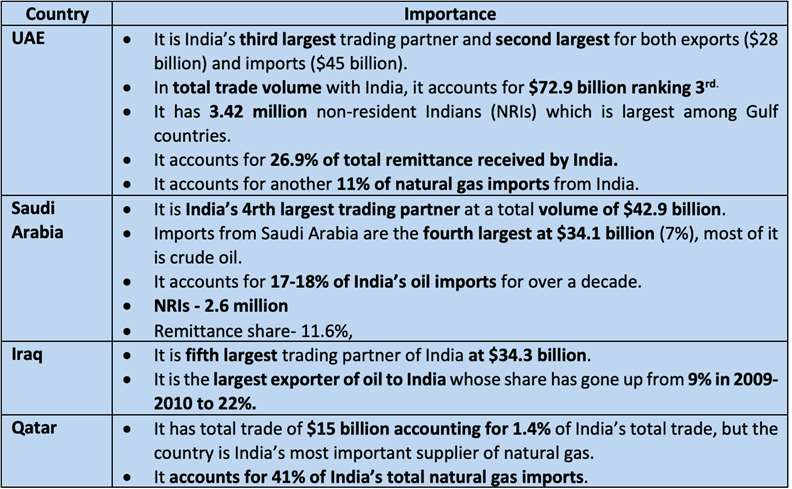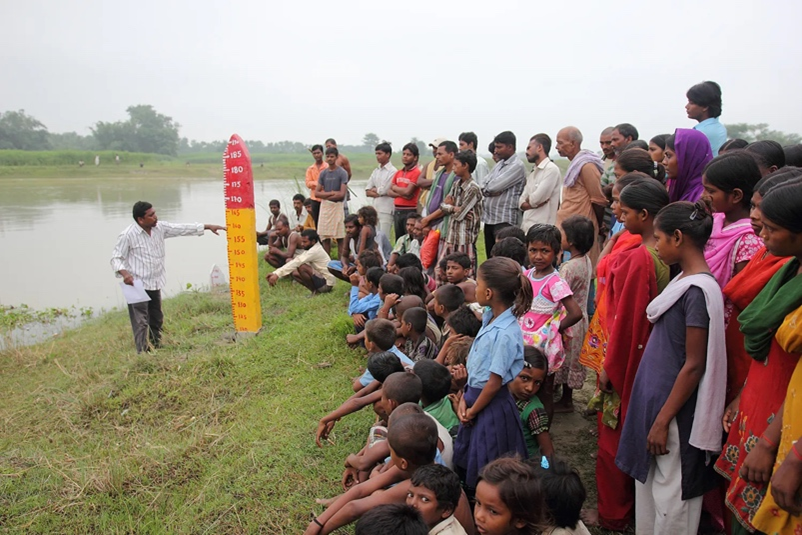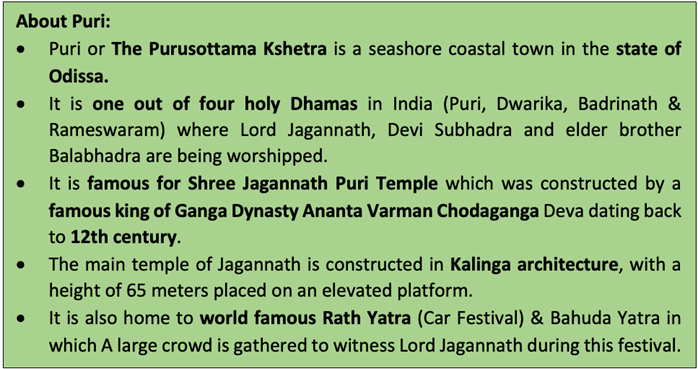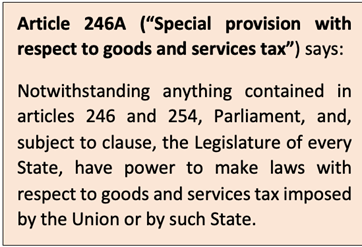Tuesday, 7th June 2022
Importance of Gulf region for India
In News
India has been recently facing a diplomatic strain especially from gulf countries amid controversial comments made by two senior officials of the country's ruling party about the Prophet Muhammad.
About the News
- Countries including Kuwait, Iran and Qatar, the UAE, Oman, Indonesia, Iraq, the Maldives, Jordan, Libya and Bahrain have recently joined the growing list of countries to have condemned the remarks.
- Relations with these gulf countries matter considering India’s relations with these countries have been shaped by energy needs, trade, and remittances from NRIs working there.
Why is the Gulf region important for India?
- Historical: India shares good relations with most of the countries in the Gulf. India has enjoyed centuries of good relations with countries like Iran, while smaller gas-rich nation Qatar is one of India’s closest allies in the region.
- Energy security: The GCC’s substantial oil and gas reserves are of utmost importance for India’s energy needs”.
- Source of remittance: There are huge number of Indians who work in the Gulf countries, and India is the largest recipient of the remittances, which is nearly twice the remittances to the next highest recipient, Mexico.
- Investment partners: The Gulf Cooperation Council (GCC), which includes UAE, Bahrain, Saudi Arabia, Oman, Qatar and Kuwait has emerged as a major trading partner of India and has vast potential as India’s investment partner for the future.
- Indian imports: According to Observer Research Foundation, more than 84% of India’s petroleum demand of worth $77 billion are met with imports, and accounted for nearly one-fifth of the country’s total imports last year.
- Crude oil: India sourced crude oil from 42 countries in 2021-22 however, the top 10 countries accounted for over 80% of which the share of Persian Gulf countries in India’s crude imports has remained at around 60% over the last 15 years.
- Indian workers: According to Ministry of External Affairs data, more than 13.46 million Indian citizens work abroad and together with Persons of Indian Origin (those who have taken up citizenship of other countries, and their descendants) these number goes up to over 32 million.

Sources:
Eco-Sensitive Zone
In News
The Supreme Court has recently directed that every protected forest, national park and wildlife sanctuary across the country should have a mandatory eco-sensitive zone (ESZ) of a minimum one km starting from their demarcated boundaries.

Highlights of Judgement
- The Centre hadwhile coming out with February 2011 guidelines on ESZ had prescribed a 10-kilometre boundary based on responses received from states and UTs.
- The Court was conscious of the fact that a uniform ESZ for all national parks and sanctuaries would not be feasibleas it noted special cases such as Sanjay Gandhi National Park in Mumbai and Guindy National Park in Chennai which are situated very close to the metropolis.
- If the existing ESZ goes beyond the 1 km buffer zoneor if any statutory instrument prescribes a higher limit, then such extended boundary shall prevail.
- Miningwithin the national parks and wildlife sanctuaries shall not be permitted.
- The judgement would apply in all such states/UTswhere the minimum ESZ is not prescribed.
- Theminimum width of ESZ may be diluted in the overwhelming public interest.
- The state or UT concerned shall approach the Court-appointed Central Empowered Committee (CEC) and MoEFCC(Ministry of Environment Forest and Climate Change) and both these bodies shall give the respective opinions or recommendations before this Court based on which this Court shall pass appropriate order.
- The Court directed the Principal Chief Conservator of Forests (PCCF)of each state and UT to submit a report in three months to the Court providing a list of activities continuing in the ESZ of every national park or wildlife sanctuary.
- The Court entrusted the PCCF to ensure thatno new permanent structure comes up within ESZ and those already carrying out any activity will have to apply for permission afresh from the PCCF within six months.

Source:
- Keep eco-sensitive zone of 1 km around forests: Supreme Court
- Supreme Court for 1-km eco-sensitive zone around national parks
Image source:
Sculptures recovered from Australia, US
In News
Ten antiquities (sculptures) retrieved from Australia and the United States were handed over to the Government of Tamil Nadu in Delhi, recently.
Some of the important sculptures


Sources:
World Food Safety Day
On June 7, 2019 the first-ever World Food Safety Day was celebrated, just a few months after it was adopted by the United Nations General Assembly in December 2018. World Food Safety Day was jointly kickstarted by the WHO and the Food and Agriculture Organisation of the United Nations with support from member states and other stakeholders. According to a 2019 report by WHO, the world records over 600 million cases of foodborne diseases annually.

This means that almost 1 out of 10 people in the world suffer adverse health effects after eating contaminated food. The report also cited that children under five years of age carry 40 percent of the foodborne disease burden with 1,25,000 deaths every year. This year, the theme of World Food Safety Day is, “Safer Food, Better Health”.
Source:
Norovirus
- Context: Two cases of Norovirus, have recently been reported in Kerala.
- Norovirus, also referred to as the ‘stomach flu’ or the ‘winter vomiting bug’, is a highly contagious virus, which can be transmitted through contaminated food, water, and surfaces.
- The primary route is oral-faecal.

- The symptoms of the illness include Diarrhoea, vomiting, nausea, stomach pain, fever, headache and body aches.
- According to WHO, the infection is also associated with intestinal inflammation, malnutrition and may cause long-term morbidity.
- Preventive measures include washing hands and avoiding contact with infected people.
- Diagnosis is done by real-time reverse transcription-polymerase chain reaction.
- No vaccines are available for the disease.
Source:
Image source:
SAMPRITI
- Context: As part of the ongoing India Bangladesh bilateral defence cooperation, a joint military training exercise Ex SAMPRITI-X is being conducted at Jashore Military Station in Bangladesh.

- Exercise SAMPRITI is an important bilateral defence cooperation endeavour, between the armies, conducted alternately by India and Bangladesh.
- The aim of the exercise is to strengthen interoperability between the two armies and to understand each other’s tactical drills and operational techniques.
- The Indian contingent of company strength is being represented by a Battalion of the DOGRA Regiment.
- During the exercise, the armies of both the Nations share expertise in multiple simulated scenarios of Counter Terrorism, Humanitarian Assistance & Disaster Relief and UN Peacekeeping Force under UN mandate.
- Also, the exercise is an opportunity for greater cultural understanding to strengthen trust and cooperation between armies of both the Nations, which will further contribute to peace and stability in the region.
Source:
Image source:
LiFE Movement
- Context: The Indian Prime Minister has recently launched the 'Lifestyle for the Environment (LiFE) Movement', on the occasion of World Environment Day.
- Mission LiFE is a global initiative, that puts individual and collective duty on all the people, to do whatever they can for a better planet.
- The vision of LiFE is to live a lifestyle that is in tune with our planet and does not harm it.
- And those, who live such a lifestyle are called ''Pro-Planet People''.

- The Mission envisions replacing the prevalent ‘use-and-dispose’ economy with a circular economy.
- ‘Use and dispose’ economy is governed by mindless and destructive consumption, whereas circular economy is defined by mindful and deliberate utilization.
- The idea of LiFE was introduced by the Prime Minister, during the 26th United Nations Climate Change Conference of the Parties (COP26), in Glasgow in 2021.
Source:
- Text of PM’s speech at launch of LiFE Movement
- PM Modi to launch global initiative 'LiFE Movement' today
Image source:
World Environment Day
- Context: 43 lakh saplings were distributed across Kerala on World Environment Day,
- Led by the United Nations Environment Programme (UNEP) and held annually on 5 June since 1973, World Environment Day (WED) is the largest global platform for environmental public outreach, and is celebrated by millions of people across the world.

- The first celebration, under the slogan “Only One Earth” took place in 1974.
- In the following years, WED has developed as a platform to raise awareness on the problems facing our environment, such as air pollution, plastic pollution, illegal wildlife trade, sustainable consumption, sea-level increase, and food security, among others.
- WED also helps drive change in consumption patterns and in national and international environmental policy.
- The World Environment Day 2022 global campaign #OnlyOneEarth calls for transformative changes to policies and choices to enable cleaner, greener, and sustainable living in harmony with nature.
- 2022 marks the 50th anniversary of the establishment of UNEP as an outcome of the Stockholm Conference, in 1972.
Source:
- 43 lakh saplings to be distributed across Kerala to mark World Environment Day
- World Environment Day
- World Environment Day 5 June
Image source:
The judiciary should have annual performance reports, too: Indian Express
Essence: Recently, the Orissa High Court has published an annual report taking stock of its performance in a difficult year that was punctuated by the resurgence of the pandemic. Taking this as context the article discusses the need for such accountability mechanism for the Judiciary.
The report provides a district-wise breakup of cases and availability of judges. It contains a section explaining the reasons for delays and backlog at the level of the district judiciary. Most HCs do not share this information with ordinary citizens even if requests are made for the same under the Right to Information Act.
Annual reports have traditionally been an important way of ensuring accountability of public bodies to Parliament and citizens. Unlike the executive, the judiciary is not under any legal obligation to prepare annual reports or table them before Parliament or the state legislature.
The article stresses that it’s up to Parliament to enact a law that mandates high courts to publish an annual report not just on their performance but also on the performance of the district judiciary under their administrative control. This law should clearly outline the expected content of the report and establish a clear timeline for its publication.
Why Should you read this article?
- To understand the need for Judiciary to present an annual report to the citizens.
Source:
Taking steps to ensure sex workers’ rights: The Hindu
Essence: Recently, in Budhadev Karmaskar v. State of West Bengal & Ors the apex court has re-asserted that sex workers and their children have right to live with dignity, just like any other citizen of India.
This stand is in line with recommendations made by the panel constituted by the Supreme Court in July 2011 but could not be completely implemented because of the government's objections to some of the recommendations.
Supreme Court has directed the government to implement other recommendations related to provision of medical assistance to sex workers, sensitization of law enforcement agencies and guidelines to media to not release name of sex workers.
However, some vexed issues will remain even after implementation of above mentioned recommendations. One of the issues is related to legality of profession of “prostitution”. While sex work by consenting adult is not a crime, “prostitution” has been defined in laws as sexual exploitation for commercial purpose. This creates problem of separating “prostitution” which includes sexual exploitation from consenting sex work. Arresting sex worker during raid on brothels was also sought to be stopped since sex work is not illegal.
Should children of sex workers be allowed to stay with them in brothel is another contested question where committee recommendation and government’s view differs.
Since we as a society have failed to contain prostitution, least government can do is to improve living conditions of sex workers and ensure harmony in multiple laws to avoid their victimization.
Why should you read this article?
- To understand issues related to conditions of sex workers.
Source:
Recovery From Disaster
- Cyclones cause lead to loss of lives and livelihoods, and the magnitude of such disaster increases when systems and infrastructure to deal with such disasters were ill-prepared.
- This gap was taken care of by founders of SEEDS (Sustainable Ecological & Environmental Development Society).

About the work of SEEDS (Sustainable Ecological & Environmental Development Society)
- The scale of devastation due to 1998 tropical cyclone that hit the coast of Kandla in Gujarat prompted SEEDS to innovate disaster-proof solutions.
- It was on-the-ground insights that opened their minds to look at the architecture and construction practices deployed in such vulnerable areas.
- In the aftermath of the Kandla cyclone, the team realised that a simple J-hook, if used, could have saved the roofs of the houses from flying off, and close to 800 workers at the salt pan could have saved their homes.
- SEEDS not only looks at disaster management but also the focuses on prevention and preparedness to deal with the disasters.
- SEEDS work with children, community volunteers, local leaders, construction workers, and duty bearers to help them understand the risks they face in their local context and plan to reduce avoidable risks.
- Avoidance of disasters begins with risk awareness and small local investments in preparedness. In most of the projects, the team at SEEDS is looking at local solutions.
- SEEDS also began to develop programmes that brought financial platforms and communities together to enable communities to access finance for various productive uses in a sustainable manner. The Bihar Sustainable Livelihood Development (BSLD) project is one such.
Quote: “Trusting our intuition often saves us from disaster.” – Anne Wilson Schaef
Source:
Share the article
Get Latest Updates on Offers, Event dates, and free Mentorship sessions.

Get in touch with our Expert Academic Counsellors 👋
FAQs
UPSC Daily Current Affairs focuses on learning current events on a daily basis. An aspirant needs to study regular and updated information about current events, news, and relevant topics that are important for UPSC aspirants. It covers national and international affairs, government policies, socio-economic issues, science and technology advancements, and more.
UPSC Daily Current Affairs provides aspirants with a concise and comprehensive overview of the latest happenings and developments across various fields. It helps aspirants stay updated with current affairs and provides them with valuable insights and analysis, which are essential for answering questions in the UPSC examinations. It enhances their knowledge, analytical skills, and ability to connect current affairs with the UPSC syllabus.
UPSC Daily Current Affairs covers a wide range of topics, including politics, economics, science and technology, environment, social issues, governance, international relations, and more. It offers news summaries, in-depth analyses, editorials, opinion pieces, and relevant study materials. It also provides practice questions and quizzes to help aspirants test their understanding of current affairs.
Edukemy's UPSC Daily Current Affairs can be accessed through:
- UPSC Daily Current Affairs can be accessed through Current Affairs tab at the top of the Main Page of Edukemy.
- Edukemy Mobile app: The Daily Current Affairs can also be access through Edukemy Mobile App.
- Social media: Follow Edukemy’s official social media accounts or pages that provide UPSC Daily Current Affairs updates, including Facebook, Twitter, or Telegram channels.





